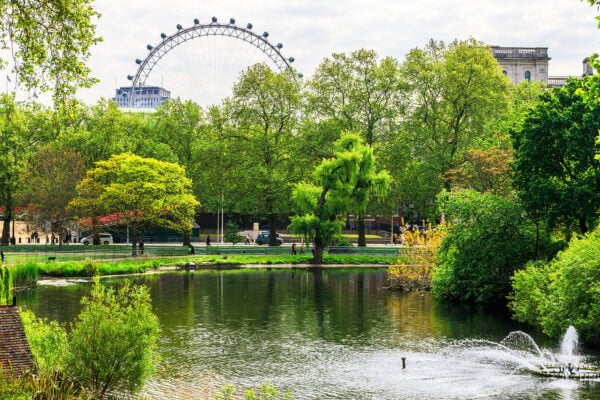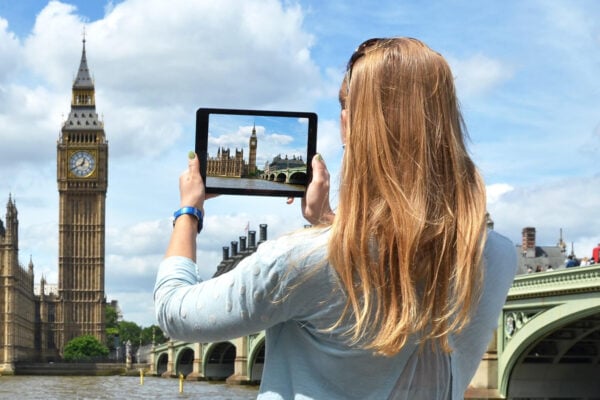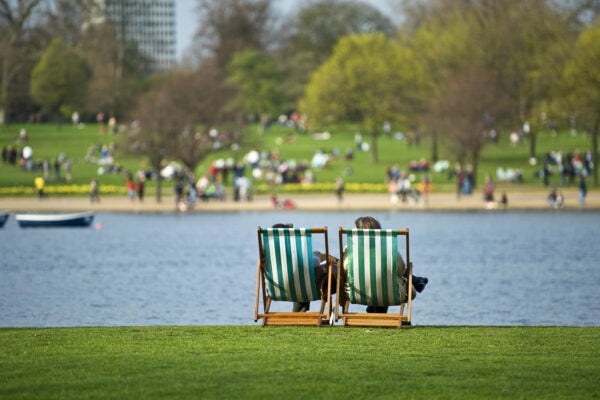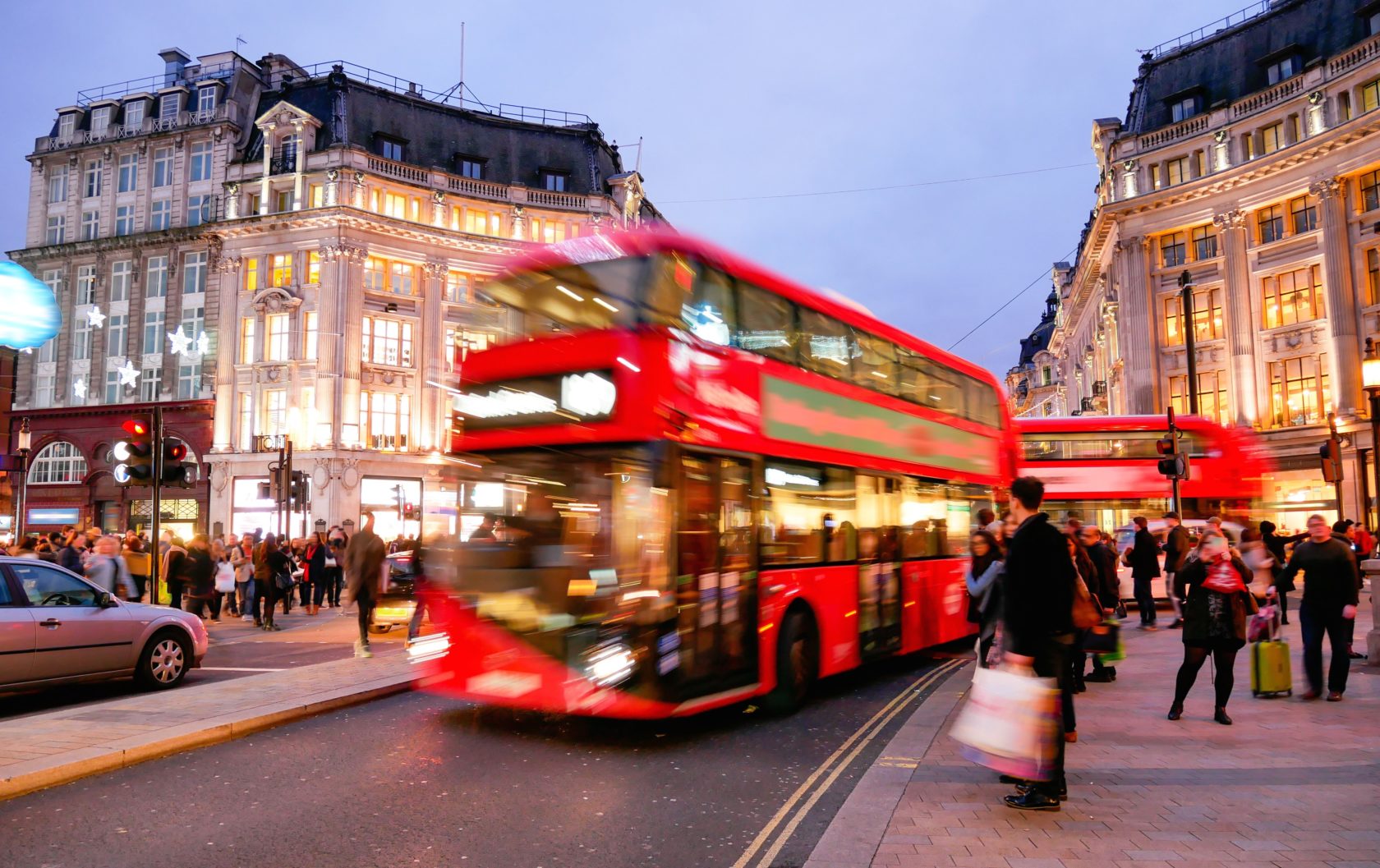
London’s double-decker buses present a perfect opportunity for some stealthy sightseeing.
Staying in your very own London Perfect apartment lets you live like a local, but for the full experience, you’ve got to travel like one on London’s public buses. London’s unmissable cherry-red, double-decker buses are to London as honking, yellow taxis are to New York. (In other words, they’re iconic, but also a genuine part of most Londoner’s lives.) London’s buses are not only an efficient way to get around, but they’re also a sneaky way to pack in some sightseeing—especially from the vantage point of the bus’s upper level. For its practicality and positioning, the best bus route in London is the number 9.
Zipping through the stylish and historic neighborhoods of Kensington, Knightsbridge, Mayfair, and St James before terminating in the heart of Trafalgar, the number 9 bus route is one of the best ways to see some of the chicest streets in all of London.
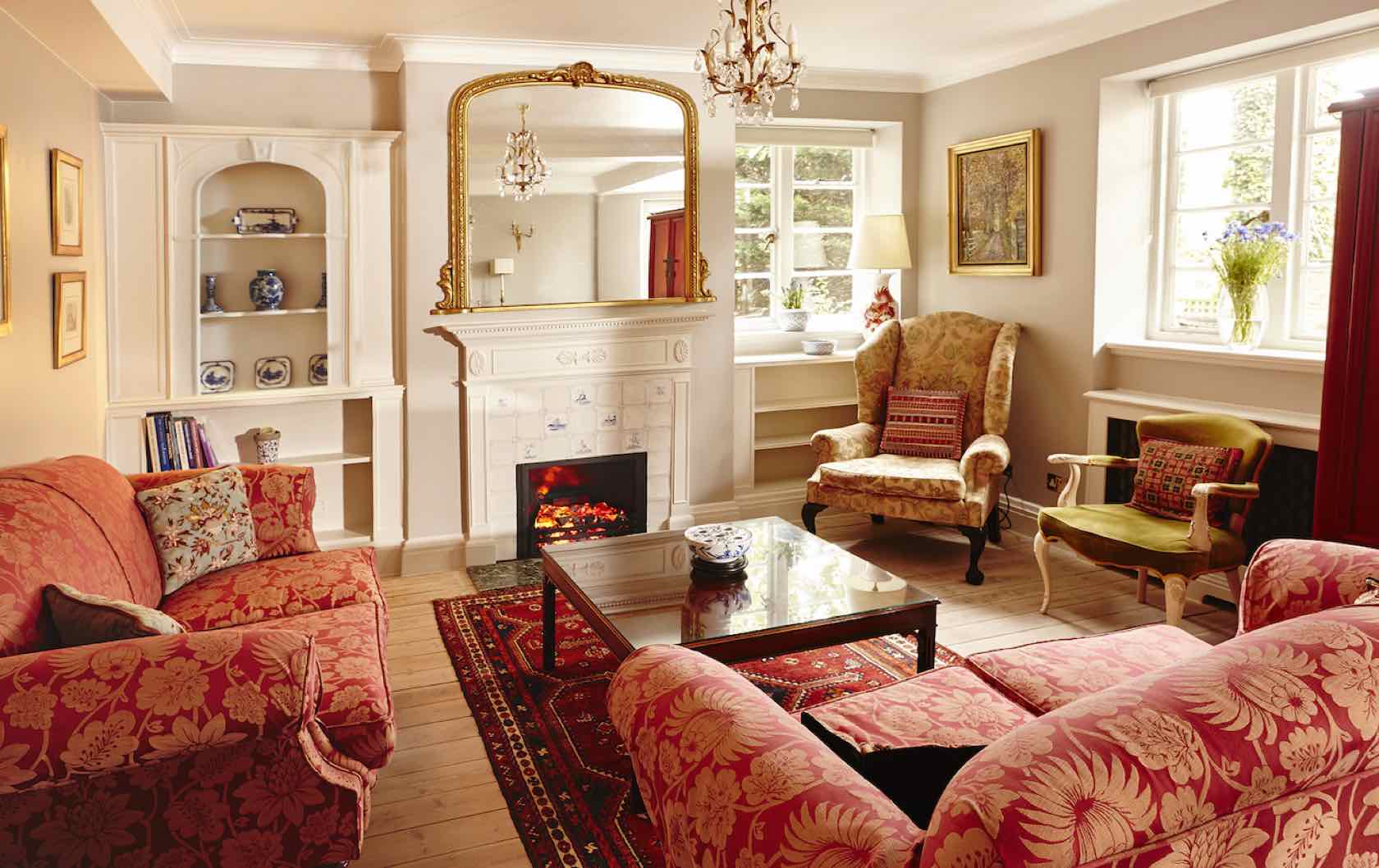
The 3-bedroom, 2-bath Macdonald apartment is close to one of the number 9 bus stops.
The best bus route in London starts in Kensington: Hop on the number 9 on the prime shopping thoroughfare of Kensington High Street, which is just steps from the contemporary Kensington Court, which sleeps up to eight.
The bus will run along the south side of the elegant Hyde Park, the perfect place for a picnic in the spring and summer. As you pass the park, the gilded Albert Memorial will be on the left. Directly across the street on the right, you’ll see Royal Albert Hall. This striking concert venue hosts everyone from famous British pop stars (think: Adele) to international classical orchestras. (Our reservations team can help you score tickets, as well as help you select the ideal apartment for your needs.)
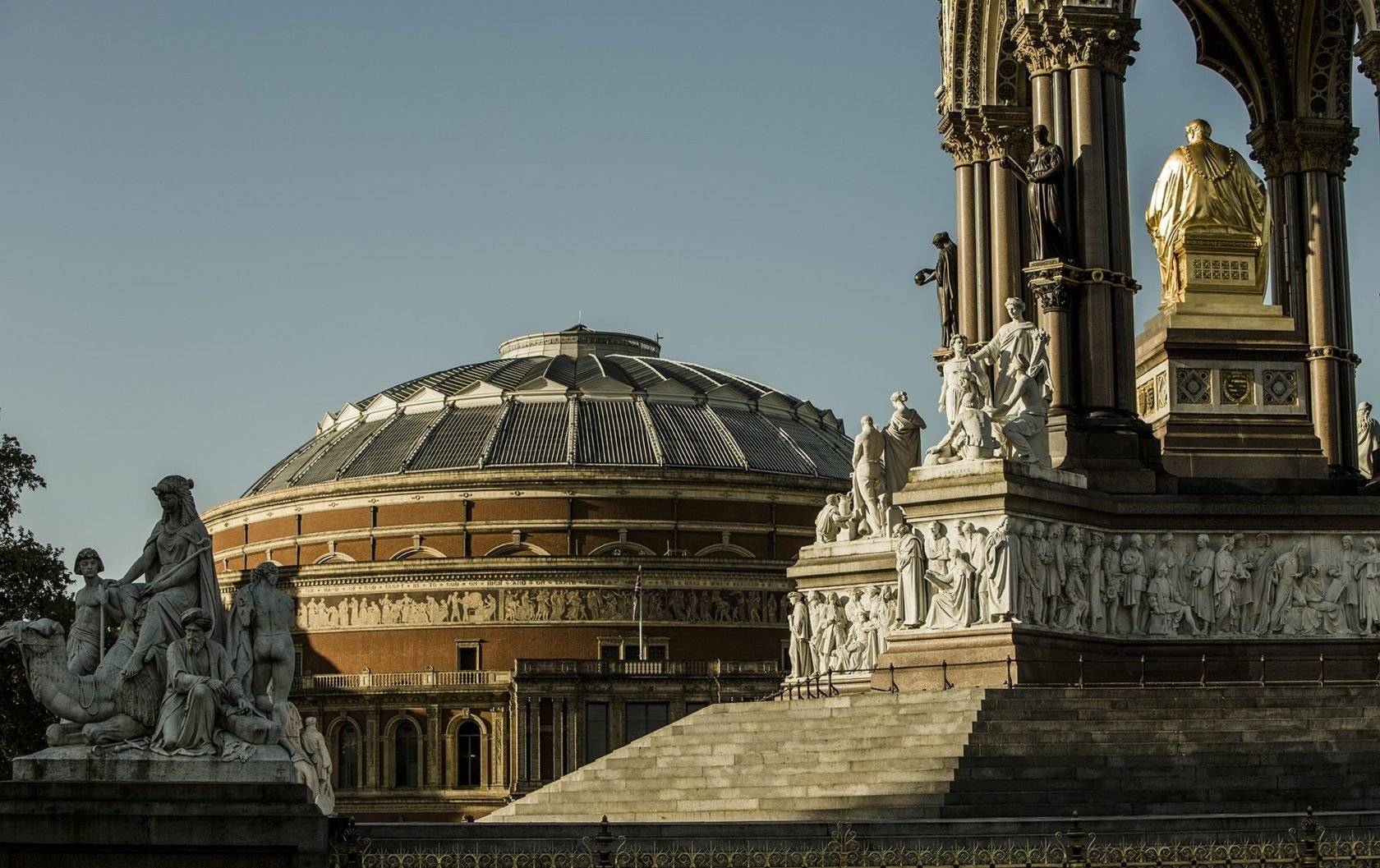
The Albert Memorial (foreground) and Royal Albert Hall (background), are two of the famous Kensington sights you’ll see on London’s best bus route, the number 9.
After passing the park, the number 9 heads into the swanky heart of well-dressed Knightsbridge, which is where you can hop aboard if you’re staying at the nearby Knightsbridge Apartment or the Walton. Keep your eyes peeled for the posh department store Harrods (though it’s easier to spot when you’re traveling in the opposite direction). You will get a good look at Harvey Nichols, another prime British heritage department store with some incredible window displays—especially around the holidays.
The best bus route in London then goes by Green Park, a peaceful Royal Park right next to Buckingham Palace. After Green Park, you’ll pass the elegant and sophisticated Wolseley restaurant, an iconic spot for traditional afternoon tea, before turning onto St James’s Street—one of the oldest and best-preserved streets in all of London. Going down St James’s Street, you’ll pass old-world storefronts like wine purveyors Berry Bros. & Rudd and the oldest hat shop in the world, Lock & Co. Hatters. Most of the establishments on this charming, impossibly English thoroughfare have been in business for over 200 years—and you can tell.
Following the historic snapshot of St. James’s Street, you’ll turn at the striking 16th-century building, St. James’s Palace, which now houses offices and royal apartments. Then, the bus will turn on Pall Mall (pronounced “Pal Mal”) where you’ll travel straight into the famous Trafalgar Square. Trafalgar Square is festooned with massive fountains, regal statues of lions, Nelson’s Column, and some seriously amazing museums including The National Gallery and ever-so-slightly-more-entertaining National Portrait Gallery. Jump off here and check out the portraits of everyone from William Shakespeare to David Beckham (seriously!).
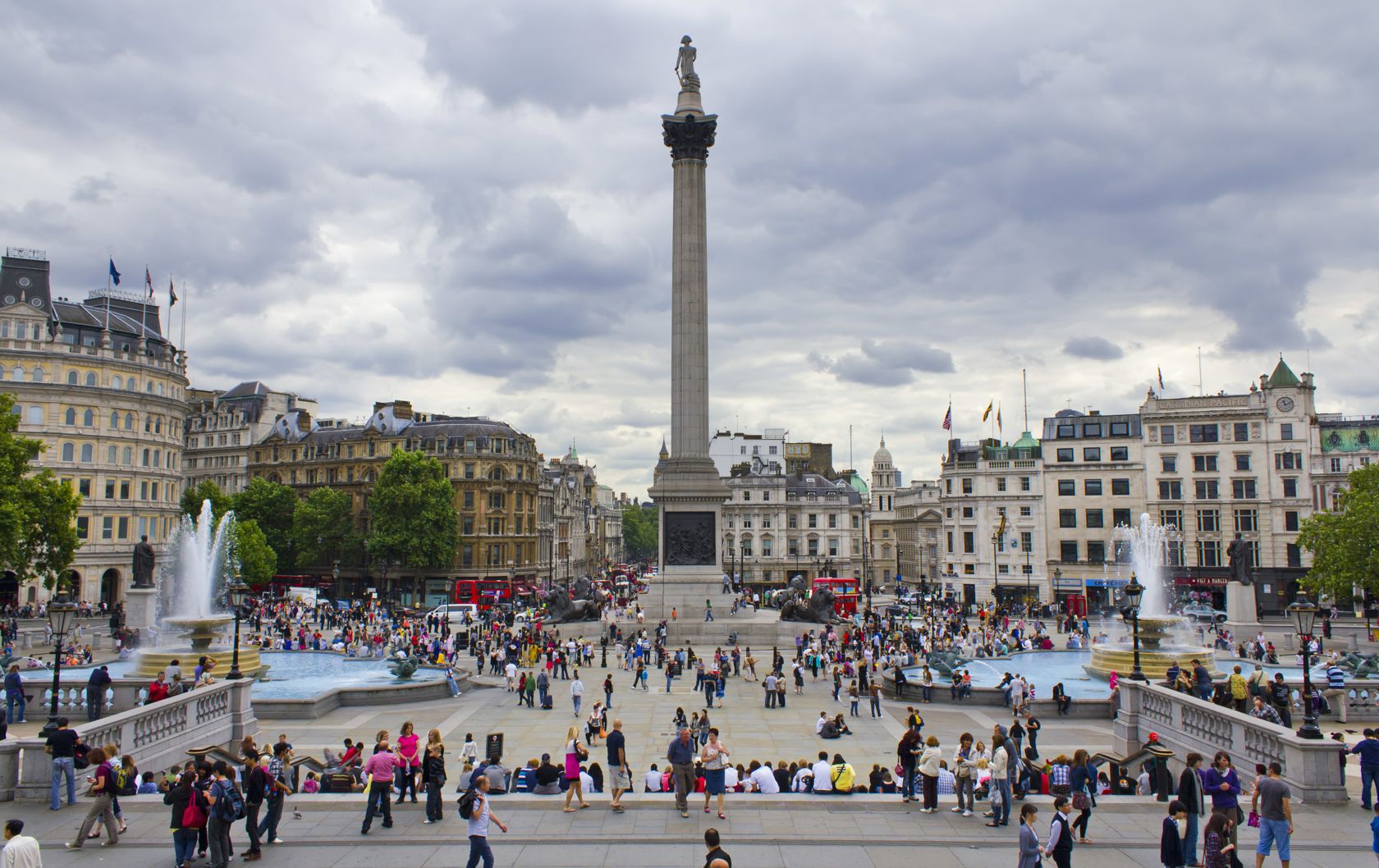
The number 9 leads right into the center of Trafalgar Square
Quick Tips On How To Ride The Best Bus Route In London Like A Real Londoner:
- Every ride cost £1.50 regardless of your final destination. Cash is no longer accepted. Instead, use a contactless credit card or a pay-as-you-go Oyster Card (you can buy an Oyster Card or “top up” your Oyster Card in most tube stations or local newsagents)
- If you use contactless, you’ll benefit from daily and weekly (Monday to Sunday) capping i.e. regardless of how many buses you take, your daily cap will be £4.50 and weekly cap will be £21.20
- If you use an Oyster Card, you’ll only benefit from daily capping (£4.50)
- Bus stops are either red transit shelters or signposts displaying the symbol for the bus (a red circle with a red horizontal line going through it)
- When you see your bus approaching, be sure to flag it (raise your hand), so the bus driver knows to stop
- When you enter the bus (from the front, middle, or back doors), “touch in” by holding your Oyster Card or contactless credit card to the yellow circle pad until you hear a beep
- Sit upstairs for the best views (just be sure you hold onto the railing as you ascend the stairs since buses start moving right away)
- Buses in central London have displays and announcements telling you the name of the next stop. When you want to get off, press the red stop-request button, usually located on the railings
- Exit from the middle or rear doors. (You don’t have to tap your card again upon exiting)
- Bus transfers are free as long as it’s within one hour of the start of your first ride
For your next stay in London, our friendly reservations team are on hand to help you select one of our stunning family vacation rentals. We can also help with shopping, itineraries, tours, dining reservations, and customized private experiences!

